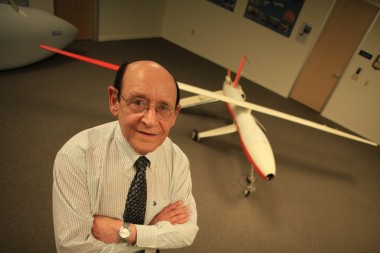Tag: Journalism
Speedskater Bridie Farrell brings story of abuse to Milwaukee Public Radio
Milwaukee Public Radio host Mitch Teich could have predicted a few outcomes from his decision to take up speedskating — sore muscles, ...Nova faulted for failing to disclose funder’s interest in drones
A recent Nova documentary about unmanned aerial drones sparked a flurry of complaints from viewers upset by what the program’s producers didn’t ...Pubradio and TV audiences continue migration to digital, State of News Media study shows
Audiences for public radio and television news continue to spend less time with legacy broadcast platforms as they transition to digital listening ...Panel urges IRS to revisit its ‘antiquated’ nonprofit rules
Delays in conferring 501(c)3 status to startup nonprofit news organizations have stymied development of new models for producing community-based journalism, exacerbating the ...Report: IRS needs to change “antiquated” approach to nonprofit news startups
Taking too long to confer 501(c)3 status to startup nonprofit news organizations not only undervalues journalism but also has stymied new approaches ...Latitude News meets Kickstarter goal to fund new weekly podcast
Latitude News, an online news outlet exploring world events and their reverberating effects in local U.S. communities and vice versa, surpassed the ...New alliance in Mile High City
The latest merger agreement from Denver combines three different breeds of public media — flagship pubTV station Rocky Mountain PBS, community-licensed jazz ...WNYC shares previously unreleased recordings of Martin Luther King Jr. interviews
New York’s WNYC has released for the first time recordings of the Rev. Martin Luther King Jr. interviewed on several occasions in ...NPR’s Carvin stands by Twitter coverage of Newtown shooting
Did NPR’s tweeter extraordinaire Andy Carvin go overboard during the media frenzy surrounding the Dec. 14 shooting in Newtown, Conn.? Michael Wolff ...Nightly Business Report cuts jobs, closes Chicago bureau
A new round of layoffs at Nightly Business Report, initiated last week, pared full-time staff to 22, down by half from two years ago. ...BURN: An Energy Journal wins AAAS Kavli Science Journalism Award
The American Association for the Advancement of Science singled out the first of four BURN documentary specials, “Particles: Nuclear Power After Fukushima,” which ...Radio g.m.’s adapt business models for newsgathering
Public radio is adapting too slowly to the competitive challenges it faces from Internet-based media platforms, and the pace of change must ...Student-centered News Outlet to report on fracking
A four-year-old nonprofit news service established by two professors at Youngstown State University is taking on an expanded role in investigative news ...Sky’s the limit: KBIA-FM gets $25k grant to create newsgathering drones
Are small, nimble flying robots the next newsgathering tool for public broadcasters?First Lady presents national arts and humanities award to Youth Radio
Oakland-based Youth Radio paid a visit to the White House Nov. 19, as First Lady Michelle Obama awarded the nonprofit for its ...








